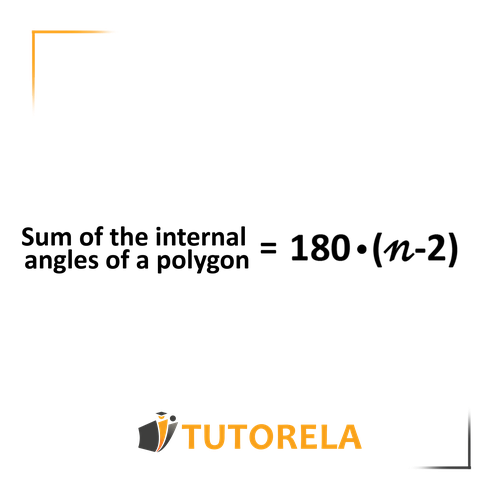In any polygon, you can calculate the sum of its internal angles using the following formula:

Sum of the internal angles of a polygon:
while
The number of edges or sides of the polygon
Steps to find the sum of the internal angles of a polygon:
- Count how many sides it has.
- Place it in the formula and we will obtain the sum of the internal angles of the polygon.
Important
In the formula, there are parentheses that require us to first perform the operations of subtraction (first we will subtract from the number of edges and only then multiply by .
First of all, observe how many sides the given polygon has and write it as .
Then, note the correct n in the formula and discover the sum of the internal angles.
When it comes to a regular polygon (whose sides are all equal to each other) its angles will also be equal and we can calculate the size of each one of them.
For example, when it comes to a four-sided polygon (like a rectangle, rhombus, trapezoid, kite or diamond), the sum of its angles will be degrees.
However, when it comes to a polygon of sides, the sum of its angles will be degrees.
The sum of the external angles of a polygon will always be degrees.